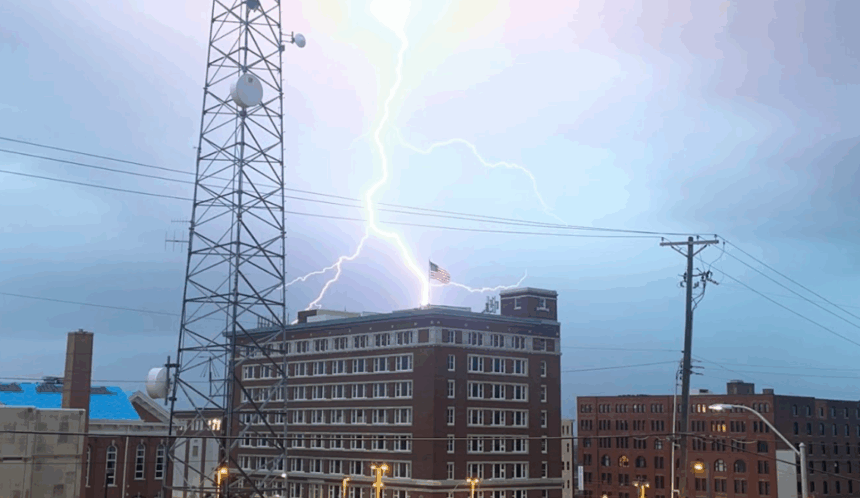Cloud-to-ground lightning, science and safety

ST. JOSEPH, Mo. (News-Press NOW) -- With all thunderstorms comes lightning. Of the various types of lightning, one that meteorologists monitor closely is cloud-to-ground lightning.
Here’s how it works: as a thunderstorm moves through an area, it pulls positive charges from the ground upward. These charges begin to “climb” up tall objects like trees, telephone poles and buildings. At the same time, negative charges build up at the bottom of the cloud, creating an invisible path known as a stepped leader—a rapid burst of electricity moving toward the ground.
When the stepped leader gets close, the positive charge from the ground shoots up its own path, called a streamer. The moment these two paths connect, it creates a bright flash of lightning.
As picturesque as it is, lightning is notoriously dangerous. One tip to remember when it comes to lightning safety is not to stand in or near open waters like pools, lakes, or rivers. Water is a conductor of electricity. Being in contact with it or nearby puts you at a greater risk of being affected by an indirect lightning strike, as the electrical charges can spread out over bodies of water.
It is also a good idea to avoid lone-standing trees and other tall objects. Because lightning takes the path of least resistance, tall objects often become targets for lightning, providing the shortest distance for charges to build up and connect. Lightning’s electrical charge can travel through trees and other targets, another reason to avoid them during a thunderstorm.
The most general rule of thumb for lightning safety is to always be indoors or in a closed automobile if lightning is in your vicinity. The best indicator of lightning is the clap of thunder it creates, especially during daylight hours when strikes are less visible. This familiar sound of thunder is generated as a narrow column of superheated air expands and contracts in less than one second, sending a shockwave through the atmosphere. If you are close enough to lightning to hear a rumble of thunder, you are close enough to be struck.





